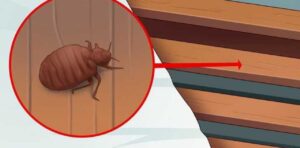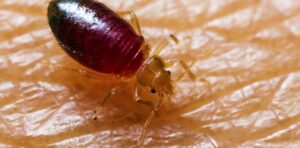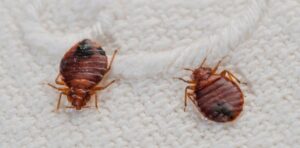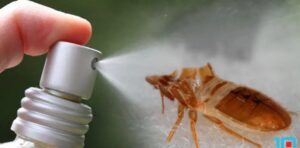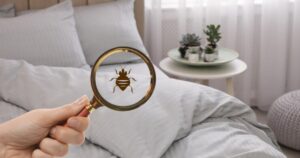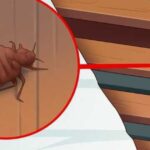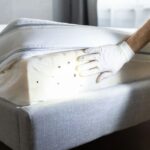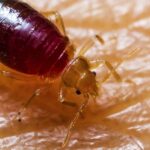Cleaning used furniture to prevent bed bugs involves thorough cleaning and inspection to ensure there are no bed bug infestations. This process includes vacuuming, disinfecting, and treating upholstery if necessary. The goal is to create a clean and safe living environment free from the risk of bed bug infestations. Regular maintenance of used furniture is key to achieving this goal.
Imagine bringing home a beautiful piece of used furniture, only to discover unwanted bed bugs invading your space. To protect your home and loved ones, it’s crucial to know the secrets of preventing these tiny pests. We will unveil the strategies to clean used furniture and keep bed bugs at bay.
Bed bugs can be a nightmare, but with the right knowledge and cleaning techniques, you can ensure your used furniture is bed bug-free. This guide will walk you through step-by-step methods to thoroughly inspect, clean, and disinfect your furniture. By the end, you’ll have the confidence to enjoy your second-hand treasures without the fear of unwelcome bed bug guests.
Inspecting Your Find
When you stumble upon a piece of used furniture that’s too good to resist, your first line of defense against bed bugs is a thorough inspection. Begin by scrutinizing every nook and cranny of the item. Check seams, creases, and hidden corners for any signs of bed bugs, including tiny reddish-brown insects, shed skins, or tiny eggs. Keep an eye out for small reddish or black dots, which might be bed bug droppings.
Consider asking the seller about the item’s history. Have they had any issues with bed bugs in the past? Have they recently had the furniture treated for pests? These questions can provide valuable insights into the condition of the piece and whether it’s safe to bring it home.
Strategic Cleaning Steps
In order to prevent bed bugs from infesting your newly acquired furniture, it’s important to take strategic steps to clean it. Start by isolating the furniture from the rest of your living space to prevent any potential bed bugs from spreading. Then, thoroughly vacuum the entire piece using an upholstery attachment to remove any loose dirt, dust, and debris.
After vacuuming, wipe down all surfaces with a damp cloth and a mixture of water and mild detergent. Make sure to pay special attention to seams and joints, as bed bugs tend to hide in these areas. This initial cleaning step not only removes surface contaminants but also lays the foundation for more thorough bed bug prevention measures.
Steam Cleaning Essentials
One of the most effective methods to ensure that your used furniture is bed bug-free is steam cleaning. High-temperature steam can penetrate deep into fabrics and cracks, killing bed bugs and their eggs. Steam cleaners can be rented or purchased for home use, but if you’re dealing with multiple pieces of furniture, it might be worth considering professional steam cleaning services.
After steam cleaning, allow the furniture to thoroughly dry in direct sunlight, as bed bugs can’t survive in high temperatures. This step not only eliminates any remaining pests but also ensures that the furniture is ready for use in your home.
Dealing with Upholstered Pieces
Upholstered furniture can be particularly susceptible to bed bug infestations due to the many hidden spaces where these pests can hide. When cleaning upholstered pieces, it’s essential to focus on both the exterior and interior components. Remove any removable cushions, pillows, or fabric coverings and launder them at the highest temperature recommended for the fabric. This will help eliminate any bed bugs, larvae, or eggs that might be hiding in these items.
For the main body of the upholstered furniture, a combination of vacuuming and steam cleaning is your best bet. Pay special attention to seams, folds, and zippers, as bed bugs often seek refuge in these hard-to-reach areas. Regularly inspect your upholstered furniture for signs of bed bugs, and if you ever spot any, act promptly to address the issue before it becomes a more significant problem.
Wooden Furniture: A Detailed Approach
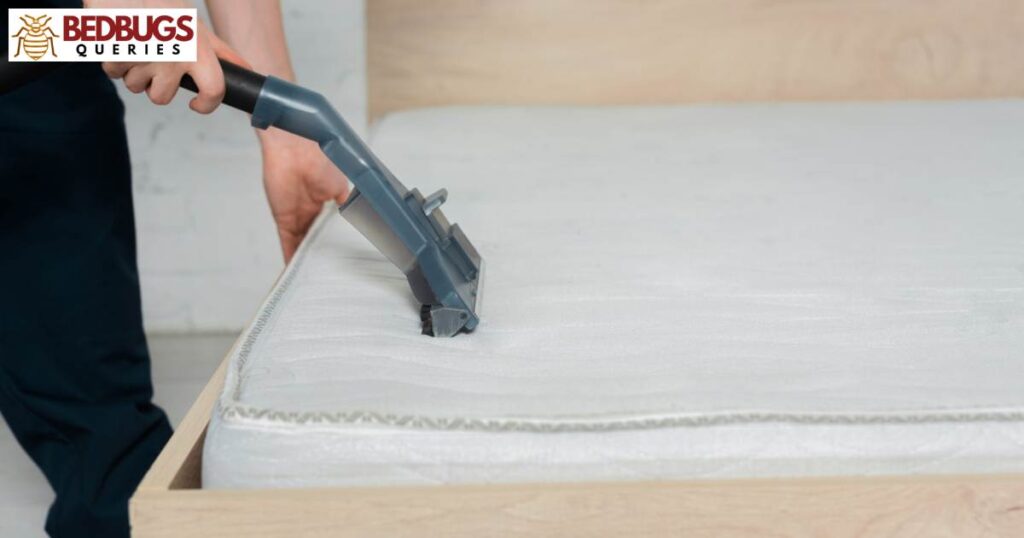
Cleaning wooden furniture to prevent bed bugs involves a slightly different approach. While bed bugs prefer upholstered pieces, they can still find their way into cracks, crevices, and joints of wooden furniture. Start by vacuuming all surfaces of the wooden item, including any drawers or cabinets. This will help remove any potential hiding spots for bed bugs.
After vacuuming, use a wooden-safe disinfectant to clean all surfaces thoroughly. Pay attention to seams and joints, and use a brush to reach into crevices and corners. This method will help you eliminate any existing bed bugs and provide a barrier against future infestations. Remember to maintain regular inspections and cleaning to ensure your wooden furniture stays bed bug-free.
Treating Creases and Crevices
Bed bugs are experts at finding tiny hiding spots, especially in furniture with folds, creases, and crevices. To prevent these pests from taking refuge in these areas, consider using bed bug-specific dust or diatomaceous earth. Apply a thin layer of this substance to seams, joints, and any other potential hiding spots. Bed bugs will be discouraged from crawling through these areas as the dust damages their exoskeletons.
Be cautious when using these products and follow the manufacturer’s instructions carefully. Keep in mind that these preventive measures should be regularly reapplied to maintain their effectiveness. Ensure that any excess dust is carefully cleaned up to prevent respiratory issues for you and your family.
Vacuuming for Bed Bug Removal
| Vacuuming Technique | Description | Effectiveness |
| HEPA Filter Vacuum | Uses high-efficiency particulate air (HEPA) filter to trap tiny bed bug particles | Highly effective in removing bed bugs, nymphs, and eggs from carpets and upholstery |
| Crevice Tool | A narrow attachment for reaching tight spots | Ideal for getting into cracks, crevices, and seams where bed bugs hide |
| Steam Vacuum | Uses high-temperature steam to kill bed bugs and their eggs | Effective for disinfecting and eradicating bed bugs from various surfaces |
| Regular Maintenance | Consistent vacuuming routine to prevent infestations | A proactive approach that helps keep bed bugs at bay |
| Emptying Bag Outside | Dispose of vacuum contents outdoors in a sealed bag | Prevents bed bugs from reinfesting your home |
| Professional Service | Hiring a pest control expert with specialized vacuum equipment | Highly effective for severe infestations and hard-to-reach areas |
Regular vacuuming is a crucial aspect of keeping your furniture bed bug-free. Invest in a vacuum cleaner with a HEPA filter to ensure that any bed bugs, their eggs, and droppings are effectively captured. Focus on all surfaces and corners, and be sure to empty the vacuum’s contents into a sealed bag outside your home to prevent any potential bed bugs from escaping.
Certainly, here’s the modified phrase with the added keyphrase:
Consider vacuuming not only your furniture but also the surrounding areas, including carpets, baseboards, and curtains. Maintaining a clean living environment is key to preventing bed bug infestations. Don’t forget to vacuum any upholstery, cushions, and cracks in the furniture where bed bugs might hide. This thorough cleaning will help ensure that you don’t inadvertently bring bed bugs home on your clothes.
Safe Disposal of Contaminated Items
It may be necessary to dispose of furniture that is heavily infested with bed bugs. If you decide to do so, take precautions to prevent the spread of these pests. Seal the contaminated furniture in plastic wrap or a heavy-duty garbage bag and clearly mark it as infested. Avoid dragging it through your home to minimize the risk of bed bugs falling off and spreading.
If you live in an apartment or shared building, inform your landlord or property management to coordinate the proper disposal of the infested furniture. Bed bug-infested furniture should not be left on the curb or in common areas, as this can lead to further infestations in your building.
Preventative Measures After Cleaning
Once you’ve successfully cleaned and treated your used furniture to prevent bed bugs, it’s essential to implement ongoing preventative measures. These include using bedbug-proof covers on mattresses and box springs, regularly inspecting and vacuuming your furniture and living spaces, and being vigilant about any signs of a potential infestation. Keep your home clutter-free, as clutter provides additional hiding spots for bed bugs.
When bringing in any used furniture in the future, follow the same inspection and cleaning steps to ensure your home remains bed bug-free. Staying proactive and informed is key to preventing bed bug infestations.
Professional Services Consideration
If you find yourself dealing with a severe bed bug infestation or feel overwhelmed by the cleaning and prevention process, it may be worthwhile to consider professional pest control services. Pest control professionals have the expertise and tools to effectively eradicate bed bugs from your furniture and living space.
When hiring a professional, make sure to choose a licensed and experienced pest control company. They can provide a customized treatment plan based on the severity of your infestation and the type of furniture involved. Regular follow-ups may be necessary to ensure that the problem is completely resolved.
Frequently Asked Questions
How can I check for bed bugs when buying used furniture?
Inspect the furniture meticulously, looking for signs such as tiny reddish-brown insects, shed skins, or small eggs. Be sure to ask the seller about any prior pest issues.
Can I use steam cleaning to prevent bed bugs on used furniture?
Yes, steam cleaning is an effective method to kill bed bugs and their eggs. Just ensure you follow the manufacturer’s instructions and allow the furniture to dry in direct sunlight.
What should I do with upholstered furniture to prevent bed bugs?
For upholstered pieces, remove cushions and fabric coverings, launder them at high temperatures, and vacuum and steam clean the main body. Regular inspections are also crucial.
How do I treat wooden furniture for bed bug prevention?
Vacuum all surfaces of wooden furniture and use a wooden-safe disinfectant. Regular inspections and cleaning are essential to maintain a bed bug-free environment.
Conclusion
Cleaning used furniture to prevent bed bugs is essential for maintaining a bug-free home. Regularly inspecting and cleaning all the nooks and crannies of your furniture is crucial. Thoroughly vacuuming and wiping down surfaces with a disinfectant can help eliminate any potential bed bug hiding spots. Taking these steps ensures a clean and comfortable living environment, free from the worry of bed bugs lurking in your furniture.
Incorporating these cleaning routines into your furniture maintenance not only safeguards your home but also extends the life of your beloved pieces. Keep your home bug-free and cozy by being diligent in your cleaning efforts.


